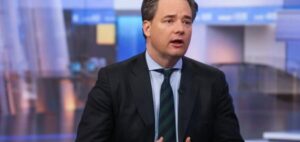Since assuming the chair’s position at the Federal Reserve in 2018, Jerome Powell has utilized his annual addresses at the Jackson Hole retreat to advocate for policy agendas spanning from one policy extreme to the other. However, this year, Powell is anticipated to adopt a more balanced approach in light of decelerating inflation and a stable economy. This strategy could shift away from explicitly guiding financial markets and instead embrace a more adaptable and flexible monetary policy approach.
Experts predict that Powell’s speech will strive to strike a middle ground, neither too hawkish nor too dovish. His past addresses have ranged from strongly worded warnings about higher rates and economic challenges to announcing a new framework focused on “full and inclusive” employment.
Despite expectations for a cautious Powell, market reactions have occasionally been adverse. In 2020, the S&P 500 declined 2% in the days leading up to his speech and 5.5% in the subsequent days. Yet, such short-term market movements are unlikely to sway Powell from his intended message.
Market acceptance of the Fed’s commitment to combating inflation has increased as it has held its ground against inflationary pressures. However, Powell faces the challenge of affirming this commitment without pushing too hard and jeopardizing the economy’s progress.
Powell’s task is to strike a balance between asserting the Fed’s credibility and legacy while avoiding causing market disruptions. Inflation, currently in the 3%-4% range, remains a concern, with signs of potential reacceleration. Balancing the narrative between inflation control and economic growth is crucial.
Despite the potential for economic pain, Powell‘s strategy is likely to be cautious and focused on sustaining the Fed’s commitment to inflation control. By embracing a nuanced approach, he aims to avoid major surprises and maintain stability while signaling the Fed’s ongoing vigilance against inflation.
Read More: Click Here


